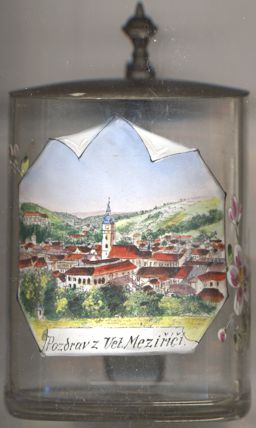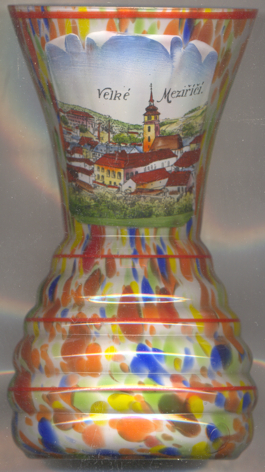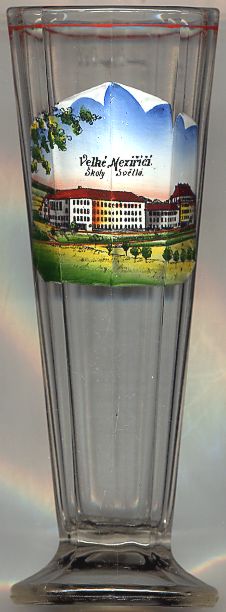

|
| ČESKÁ REPUBLIKA | CZECH REPUBLIC |
| Vysočina | Highlands (Jihlava) region |
| Okres: Žďár nad Sázavou |
Velké Meziříčí is situated at an elevation of 425 m in a valley of the Křižanovská vrchovina (Křižanov highlands) region in the southern part of the Bohemian-Moravian Highlands, at the confluence of the rivers Oslava and Balinka. The municipality has a population of about 11,800 (2011). Velké Meziříčí is part of the district Žďár nad Sázavou of the Vysočina (Highlands or Jihlava) region of the Czech Republic.
 The oldest written mention of Velké Meziříčí is found in a document of 1236. The village obtained the privileges of a town in 1408; the
privileges were confirmed in 1417 by King Václav (Wenceslaus) IV of Bohemia. During the Thirty Years' War (1618–1648) Velké Meziříčí
was sacked eight times. In 1886 the town was connected to the railroad system (part of the railroad from Křižanov to Studenec). On the 6th May 1945,
just two days before the town's liberation by the Red Army, Velké Meziříčí was the site of a massacre carried out by German soldiers
who killed 58 members of the Revolutionary National Committee.
The oldest written mention of Velké Meziříčí is found in a document of 1236. The village obtained the privileges of a town in 1408; the
privileges were confirmed in 1417 by King Václav (Wenceslaus) IV of Bohemia. During the Thirty Years' War (1618–1648) Velké Meziříčí
was sacked eight times. In 1886 the town was connected to the railroad system (part of the railroad from Křižanov to Studenec). On the 6th May 1945,
just two days before the town's liberation by the Red Army, Velké Meziříčí was the site of a massacre carried out by German soldiers
who killed 58 members of the Revolutionary National Committee.

The  church of St. Nicholas (kostel svatého Mikuláše)
[far left, no. 4524, and left, no. 3295: background centre], the church of the Roman Catholic parish, is the oldest church in
town. The first documented mention dates back to 1317. The oldest parts of the present church is a portal in early
Gothic style from the second half of the 13th century on the northern side. The double nave was created in the 15th century.
In 4120, a square tower of a height of almost 80 metres was completed. Major reconstruction works were carried out
in 1774–1775. Several furtehr renovations took place in the 20th century.
church of St. Nicholas (kostel svatého Mikuláše)
[far left, no. 4524, and left, no. 3295: background centre], the church of the Roman Catholic parish, is the oldest church in
town. The first documented mention dates back to 1317. The oldest parts of the present church is a portal in early
Gothic style from the second half of the 13th century on the northern side. The double nave was created in the 15th century.
In 4120, a square tower of a height of almost 80 metres was completed. Major reconstruction works were carried out
in 1774–1775. Several furtehr renovations took place in the 20th century.

The  školy
školy
[https://de.wikipedia.org/wiki/Velké Meziříčí,
http://en.wikipedia.org/wiki/Velké Meziříčí,
http://cs.wikipedia.org/wiki/Velké Meziříčí,
http://cs.wikipedia.org/wiki/Velkmeziříčský masakr,
http://www.hotelskola.cz/historie/,
https://cs.wikipedia.org/wiki/Kostel_svatého_Mikuláše_(Velké Meziříčí)]
![[scale]](lineal.jpg)